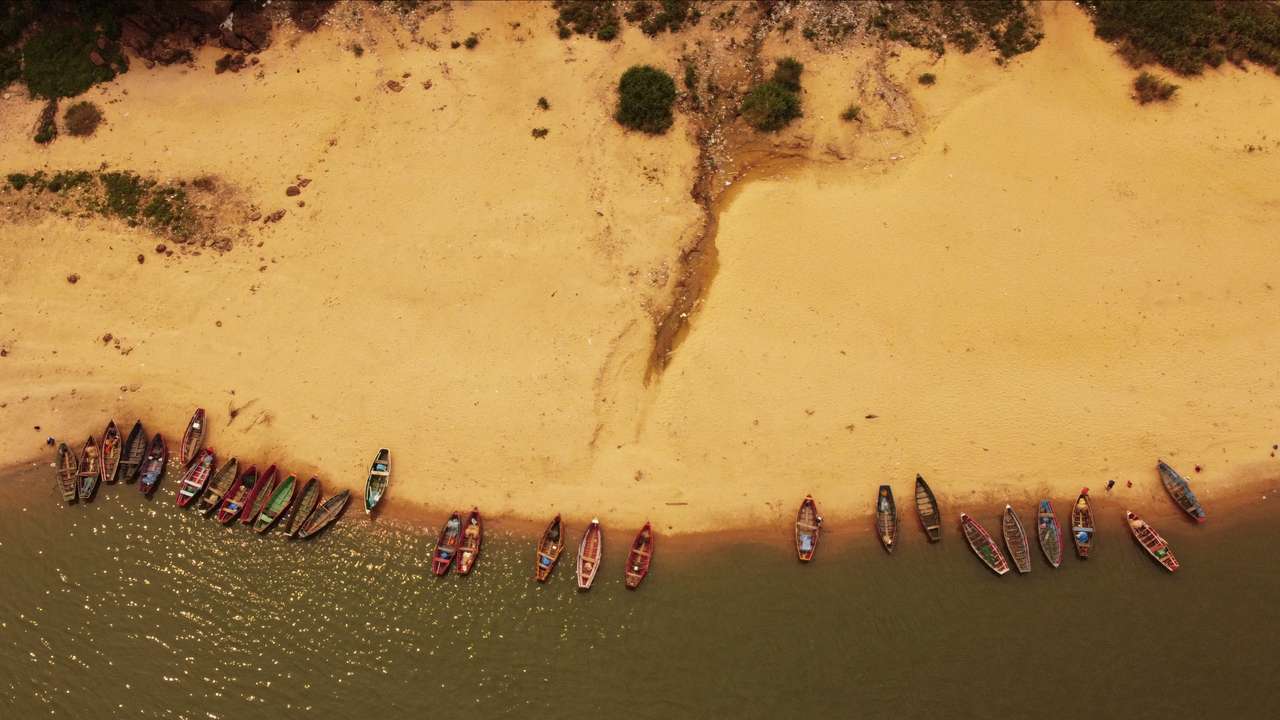Argentina grains ships load less cargo as river levels hit near-record lows

Argentina grains ships load less cargo as river levels hit near-record lows
By Maximilian Heath
Huge grains ships loading up with soy and corn at Argentina's major inland river ports around Rosario are taking on less cargo as water levels drop to near record lows due to a major drought upstream in Brazil, pushing up costs and transport times.
The Parana River, which carries almost 80% of Argentina's grains and oilseeds for export, is at the second lowest level for this time of year since 1970, behind only a major decline in 2021, data from the Rosario grains exchange show.
The drop in river levels, so soon after the last major decline, underscores how more extreme weather, linked to climate change, is hitting trade along major waterways in the resource-rich region that supplies the world with grains and metals.
The low levels now are forcing the huge seagoing boats that load up at the inland river ports near Rosario to take on thousands of tons less cargo, industry insiders said.
"The Parana River is really low," Guillermo Wade, manager of the Chamber of Port and Maritime Activities (CAPyM), said in comments to Reuters.
"They are loading three feet and eight inches less than they could load if the river were normal, so that means approximately 15% less than what could be loaded."
The latest data from the Argentine Naval Prefecture show the level of the Parana at Rosario was 0.38 meters - measured from a depth stick "zero" index rather than the riverbed - far below the normal level of around 2.5 meters at this time of year.
MORE SHIPS, HIGHER COSTS
Major rivers around South America, including also the Paraguay River, have been hitting record lows in recent weeks with water levels depleted by a severe drought upriver in Brazil that has hindered navigation along waterways in the Amazon.
The Paraguay-Parana system is a waterway of more than 3,400 kilometers (2,113 miles) that runs through Argentina, Brazil, Uruguay, as well as landlocked Paraguay and Bolivia.
Argentina is the world's top exporter of processed soy oil and meal, crushed from soybeans in huge plants alongside the Parana River. The fact huge seagoing ships can come up-river to Rosario gives the country an important competitive edge.
The Rosario grains exchange said in a report that the low water levels looked unlikely to improve any time soon and this could mean dozens more ships than normal would be required in the remainder of the year to transport soy, corn and wheat.
"The forecasts for the coming months are worrying as we approach peak season for wheat transportation. The persistence of these water levels could begin to generate significant losses for the agroindustry," it said.
Neighboring Paraguay is the No. 3 soybean exporter and some 80% of its grains travel along waterways to seaports down-river.
Less rain than normal is expected in the second half of the year due to the La Nina weather phenomenon, which brings drier, cooler conditions in Paraguay and Argentina, though it usually heralds wetter weather farther north in Brazil.
In Brazil the worst drought on record has lowered the water level of rivers in the Amazon basin to historic lows, parching much of the region's vegetation and causing wildfires across South American nations, cloaking cities in clouds of smoke.
This article was produced by Reuters news agency. It has not been edited by Global South World.